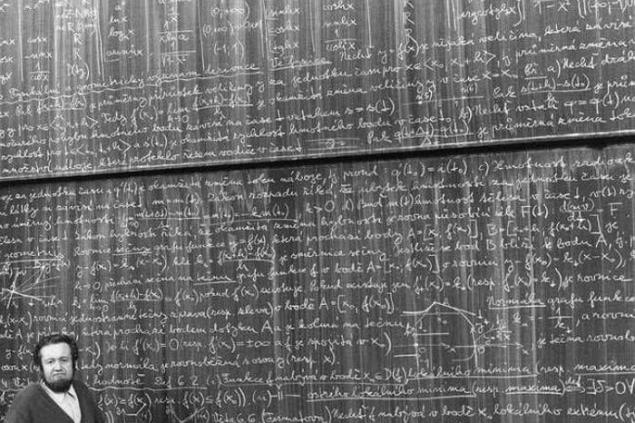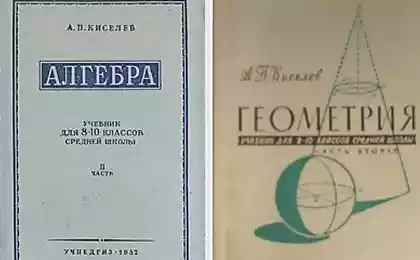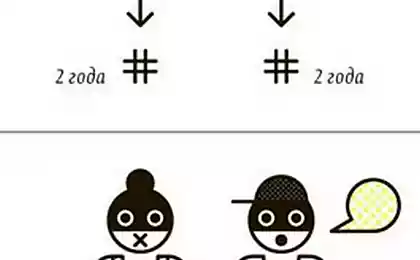530
11 the mathematical techniques that You might use in life

A selection of simple mathematical techniques, many of which are quite relevant in life and allow us to consider faster. 1. A quick calculation placentomegaly, in the age of loans and installment most relevant mathematical skill can be called a virtuoso computing interest in mind. The fastest way to calculate a percentage of a number is to multiply this percentage by this number, followed by discarding the last two digits in the final result, because the percentage has nothing like one-hundredth. How much is 20% of 70? 70 20 = 1400. Drop two digits and get a 14. When moving multipliers work is not changing, and if you try to calculate 70% of 20, then the answer is 14. This method is very simple in the case of round numbers, but what if you need to calculate, for example, the percentage of the number 72 or 29? In such a situation would have to sacrifice accuracy for speed and to round the number (in our example 72 is rounded to 70, and 29 to 30), and then use the same method to multiplication and drop the last two digits. 2. A quick check dalimotion whether evenly divide 408 candies among 12 children? To answer this question easily and without the aid of a calculator, if you remember the simple divisibility rules that we were taught in school. • A number is divisible by 2 if its last digit is divisible by 2.• A number is divisible by 3 if the sum of the digits comprising a number is divisible by 3. For example, take the number 501, will present him as 5 + 0 + 1 = 6. 6 is divisible by 3, and hence the number 501 is divisible by 3.• A number is divisible by 4 if the number formed by its last two digits is divisible by 4. For example, take 2 340. The last two digits form the number 40, which is divisible by 4.• A number is divisible by 5 if its last digit is 0 or 5.• A number is divisible by 6 if it is divisible by 2 and 3.• A number is divisible by 9 if the sum of the digits that compose the number is divisible by 9. For example, take the number 6 390, imagine it as 6 + 3 + 9 + 0 = 18. 18 divisible by 9, and hence the number 6 390 divided by 9.• A number is divisible by 12 if it is divisible by 3 and 4. 3. A quick calculation connecvity square root of 4 is 2. This is deemed any. How about the square root of 85? For quick approximate solutions find the nearest square to the given number, in this case, 81 = 9^2. Now find the nearest square. In this case, 100 = 10^2. The square root of 81 is somewhere between 9 and 10, and since 85 is closer to 81 than to 100, the square root of this number will be 9 something. 4. A quick calculation of time after which the cash contribution at a certain percentage advoacate quickly find out the time it will take to get your money at a specific interest rate has doubled? There also does not need a calculator enough to know the "rule of 72". Divide the number 72 on our interest rate, then obtain the approximate period over which the contribution will be doubled. If the contribution is made under 5% per annum, it will take 14 years to doubled. Why 72 (sometimes I take 70 or 69)? How does it work? These questions are deployed answer is Wikipedia. 5. A quick calculation of time after which the cash contribution at a certain percentage of Troitsa this case, the interest rate on Deposit should be a divisor of 115. If the contribution is made under 5% per annum, it would require 23 years, he has tripled. 6. A quick calculation of hourly stalkerstva what you are going through interviews with two employers who don't call a salary in the usual format "rubles per month", and talking about the annual salaries and hourly wages. How to quickly calculate where the pay is higher? Where the annual salary is 360 000 rubles, or where pay 200 rubles per hour? To calculate the pay per hour of work in articulating the annual salary you need to discard from the sum named three of the last sign, and then divide the resulting number by 2. Turns 360 000 360 2 = 180 rubles per hour. Ceteris paribus, it turns out that the second sentence is better. 7. Advanced math alcahuasi fingers capable of so much more than simple operations of addition and subtraction. Using your fingers can be easily multiplied by 9, if you suddenly forgot the multiplication table. Let's number the fingers from left to right from 1 to 10. If we want to multiply 9 by 5, bend the fifth finger on the left. Now look at the hands. There are four nesehnuti finger to bent. They represent tens. And five nesehnuti fingers after bent. They represent units. Answer: 45. If we want to multiply 9 by 6, then folded around a sixth finger on the left. Get five nesehnuti fingers before the bent finger and four after. The answer: 54. Thus it is possible to reproduce the entire column multiplying by 9. 8. Fast multiplication on 4Существует extremely easy way lightning fast multiplication of large numbers even at 4. It is enough to decompose the operation into two steps, by multiplying the given number by 2, and then again at 2. See for yourself. 223 multiply 1 by 4 in mind not everyone can. Now, do 1223 2 = 2446 2446 and further 2 = 4892. So much easier. 9. Quick determination of the necessary minimumrate that you pass a series of five tests, successful completion of which you need a minimum score of 92. Was the last test and the previous results are as follows: 81, 98, 90, 93. How to calculate the bare minimum that you need to get in the last test? To do this, consider how many points we lost/went over in the passed the tests, indicating a shortage of negative numbers, and the results with a margin — positive. So, 81 92 = 11; 98 92 = 6; 90 92 = 2; 93 92 = 1. Adding these numbers, we obtain a correction to a necessary minimum: 11 + 6 2 + 1 = 6. It turns out the deficit to 6 points, and therefore, the required minimum increases: 92 + 6 = 98. Things are bad. :( 10. A quick representation of the value of ordinary groupremove the value of the fractions can be represent as a decimal, if you bring it to simple and intuitive ratios: 1/4,1/3, 1/2, and 3/4. For example, we have a fraction 28/77, which is very close to 28/84 = 1/3, but because we increased the denominator, then the original number will be a few more, that is a little more than 0,33. 11. The trick with the guessing citramone to play a little of David blaine and impress your friends with an interesting, but very simple mathematical trick. 1. Ask a friend to make an integer.2. May he multiply it by 2.3. Then add to the resulting number 9.4. Now let's take 3 from the resulting number.5. Now divide the resulting number in half (it is in any case divided, without a remainder).6. Finally, ask him to subtract from the resulting number the number that he made in the beginning. The answer will always be 3. Yes, very stupid, but often the effect exceeds all expectations. published
Source: www.brainstorm-blog.ru/2015/03/blog-post_10.html























